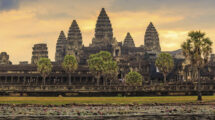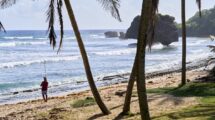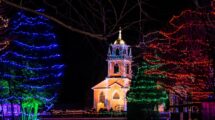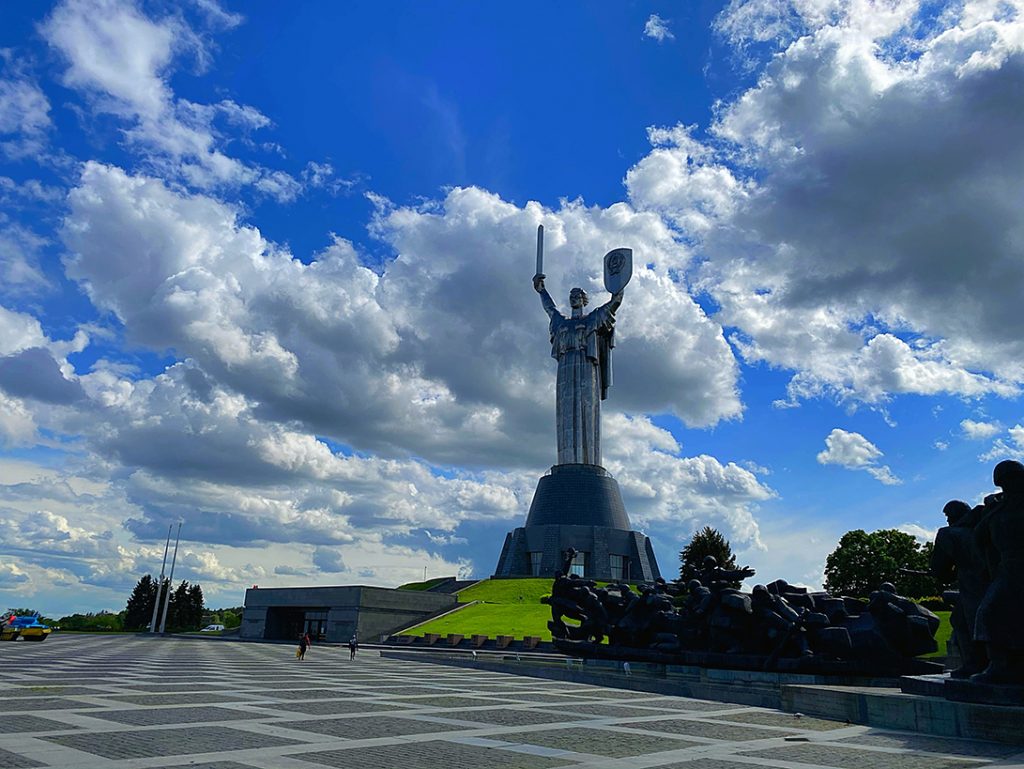
A genealogy-inspired journey offers insights into family history and heritage
by Michele Peterson
“You need to be in a good mood to make the best verenyky,” explained Natalya, my cooking instructor as she brushed flour across her rolling pin. “It helps the dumpling dough be softer.”
It’s the start of a genealogy-themed week of sightseeing in Ukraine and my guide at JC Travel has crafted a combination of activities that will get me in touch with my ancestry. And there’s no better place to begin than in a Verenyky Master Class. The boiled dumplings (also known as perogy or pyrohy), were a much-anticipated dish in our family. I remember my Ukrainian-Canadian grandmother filling triangles of dough with cheese and potato (or plums or cabbage), and we’d enjoy the plump treats with dollops of sour cream.
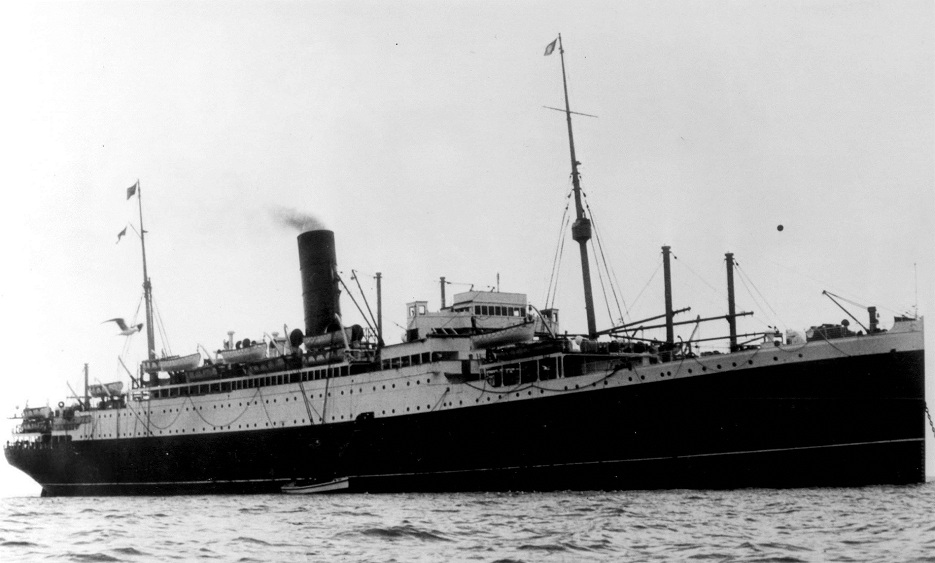
Genealogical journeys like mine — vacations combining family history with travel— are on the rise. Active older adults curious about their heritage are investing in DNA-inspired journeys to the lands of their ancestors.
In my case, Ancestry.ca estimated that 80 percent of my ethnicity was from Eastern Europe. Kyiv, the capital of Ukraine, best known for its gold-domed religious architecture and long, rich history, seemed a perfect place to start.
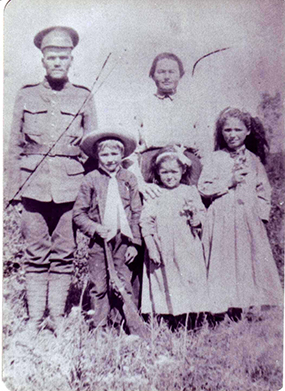
Researching family roots Every journey begins at home. Through family records I’d traced our ancestry back to my mother’s paternal grandparents who had emigrated to Canada in 1898 from Burdiakivtsi in western Ukraine. They were part of the surge of immigrants who had come to Canada between 1867 to 1914 when the western provinces had opened for settlement.
From First World War military records at Library and Archives Canada, I’d learned that my mother’s maternal grandparents had emigrated from Kapustyntsi, in eastern Ukraine. They worked a homestead in Saskatchewan until my great-grandfather enlisted in the 44th Battalion Canadian Infantry in WWI. Sadly, he was killed in 1917 near Arras, France. After making an emotional pilgrimage to the Vimy Memorial where his name is inscribed, I became interested in learning more about the life he’d left behind in Ukraine.
So, I turned to the pros at the Canadian Museum of Immigration at Pier 21 for help. In addition to its museum in Halifax featuring historic artifacts, exhibitions on newcomer stories and research centre, it offers remote reference services. I submitted research requests for information on my mother’s paternal and maternal grandparents, as well as my father’s paternal line and hoped for the best.
A week later, a researcher reported back. One of the challenges for unskilled researchers like myself, is the variation in the spelling of surnames. Records showed my maternal great-grandfather’s surname as Reli/Bali rather than the Biely, as I had been searching. He’d travelled via Latvia to England, crossing the Atlantic to arrive in Canada on October 4, 1912.
My great-grandmother and their four young children followed, arriving August 6, 1913. On the Pier 21 website, I was even able to see an image of the ocean liner they travelled on. The researcher had located their immigration details through the name of Olga, my grandmother’s younger sister. It was a poignant discovery, as baby Olga didn’t survive childhood.
According to hospital registers, the challenges didn’t end when they arrived at the Port of Quebec. After a health inspection, they were transferred to Grosse Île, an island in the St. Lawrence that served as quarantine quarters and a hospital from 1832 to 1937. Three weeks later, they embarked on the long rail journey to Saskatchewan where they were finally reunited with my great-grandfather.
With these immigration details in hand, my next step was to hire a genealogy specialist from Cobblestone Freeway Tours to conduct archival research in Europe. Several weeks later they reported that through records in the church archives of Lviv, Borschiv, Ternopil and Warsaw, they were able to trace my mother’s paternal line in western Ukraine back to the late 1700s.
Encouraged by the progress, I decided to make a foray to Ukraine to get a sense of the country and perhaps make some connections.
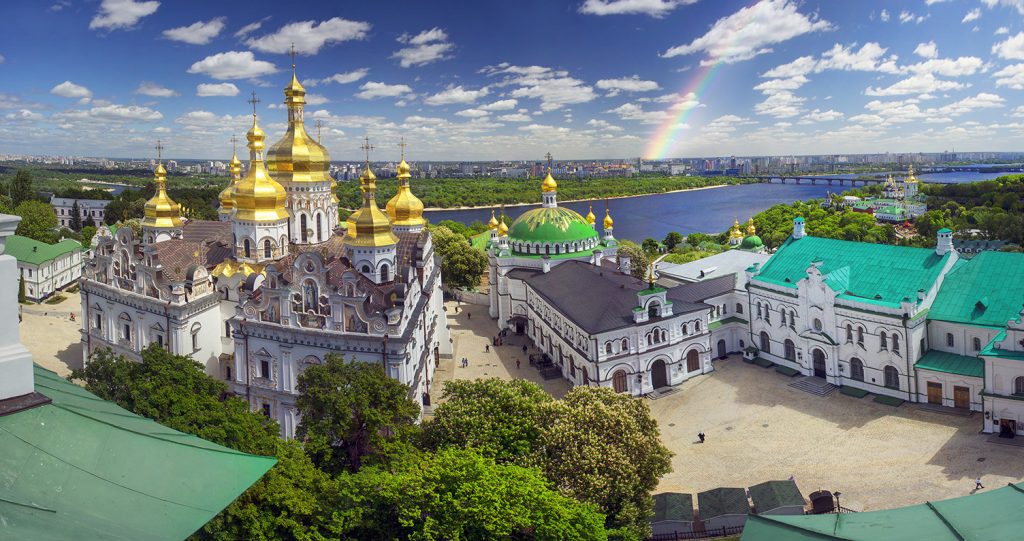
Captivating Kyiv
Present-day Ukraine is territorially one of the largest countries in Europe. Bordered by seven nations, its coastal regions along the Black Sea, plateaus and vast steppes were invaded, used as trade routes and settled by waves of Greeks, nomadic Scythians, Vikings, Sarmatians, Khazars, Mongols, Slavic peoples and many others.
Founded officially in 482 AD, Kyiv is positioned on the banks of the Dnieper River, dividing east and west Ukraine. For me— the first in my immediate family to step foot in Ukraine since our ancestors left — the sight of the mighty waterway from the city’s hills was exhilarating.
Most impressive was the sight of the UNESCO World Heritage Site of Kyiv-Pechersk Lavra rising from a forest of spectacular horse- chestnut trees on a plateau overlooking the Dnieper. Set within fortified walls, this ancient complex of monastic buildings, museums and churches is home to the Monastery of Pechersk Lavra, founded by St. Anthony and St. Theodosius in the 11th century.
“Even today it serves as an important pilgrimage site for Orthodox Christians,” explained my guide Anya, as we stepped quietly past a woman at confession.
Incense billowed from ornate censors, while we took beeswax candles and entered the underground complex of labyrinthine caves, exploring cell-sized rooms and a necropolis of mummified monks buried within the narrow damp corridors.
At the church office, Anya helped me complete a written request for prayers for my mother. For my aunt, an artist, I purchased an icon of St. Alypius, an Eastern orthodox saint, monk and religious painter whose brush was said to be guided by God and angels.
Next, we walked to the National Museum of krainian Folk Decorative Art, home to more than 80,000 pieces of traditional folk-art dating from the 15th century. It’s a must-see for heritage travellers as the hand-drawn ceramics, decorative painting of
homes and household items, pysanky (egg decoration), weaving and wood carving are all important parts of traditional Ukrainian culture and identity.
Of special interest to me was the embroidery. The patterns and colours hold symbolic meanings drawn from pagan roots, Slavic mythology and Christianity. My mother remembers her own Ukrainian vyshyvanka (traditional blouse) embroidered in a motif of red flowers wrapped in vines, representing purity and immortal beauty.
Our next stop was gold-domed St. Sophia’s Cathedral, located in the historic zone of Kyiv. Dating back to 1017, it’s Kyiv’s oldest surviving church and features elaborate ornamentation, original frescoes and a wedding-cake shaped bell tower.
Within easy walking distance was St Andrew’s Church, constructed from 1747 to 1754. The baroque building is situated on Andriyivsky Descent, an atmospheric street lined with restaurants, bars and One Street Museum, packed with urban artifacts from the turn of the 20th century.
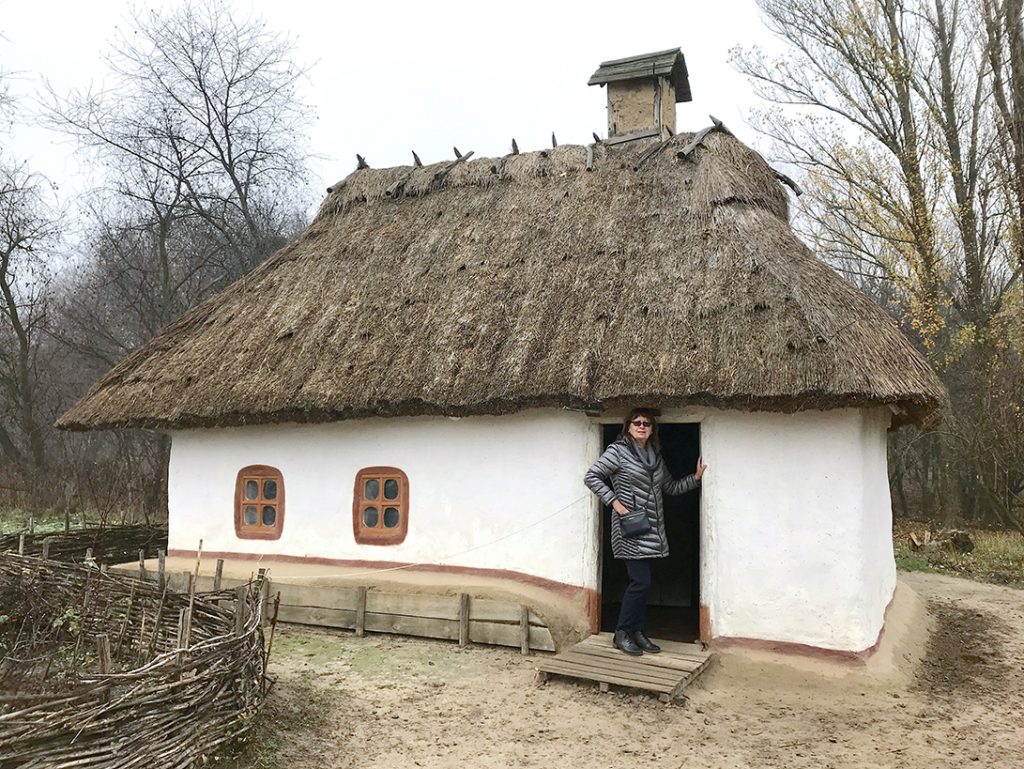
Ukrainian national pride
Like many Ukrainian immigrants, my ancestors were farmers. To get a sense of rural life as it may have been in the late 1800s, JC Travel recommended spending time at Pirogovo open-air museum on the outskirts of Kyiv.
This National Museum of Folk Architecture and Life of Ukraine features buildings dating to the 16th century including a domed wooden church, windmills for grinding grain, a school and peasant homes set on peaceful fields surrounded by forest.
Stepping into one of the thatched-roof homes was like stepping back in time. Many of the techniques Ukrainians used to build these sod houses were replicated when settling Canada’s west. The handmade domestic items, kitchen gardens and traditional folk songs played by the museum’s musicians all struck a chord of recognition in me.
Another evocative stop was the museum complex at the Motherland Monument, a Soviet statue that towers over Kyiv’s skyline. I felt the weight of Ukraine’s rich and often troubled history within the new Museum of the Making of the Ukrainian Nation featuring 3-D dioramas with eerily realistic figures of more than 100 national heroes, military leaders, royalty, scientists and scholars including poet Taras Shevchenko.
“The exhibits are intended to nurture patriotism, conscious citizenship and respect for Ukraine’s traditions, culture and achievements,” explained Anya.
One exhibit featured soil gathered from regions across Ukraine. Visitors could take home a souvenir piece of their homeland, so I carefully filled small bags of black earth from two regions.
“Did you know your grandmother’s ancestral village translates to ‘cabbage’ and your grandfather’s district means ‘borsch’ (traditional beet and cabbage soup)?” said Anya with surprise. “It’s like they were made for each other.”
It was a fun reminder that genealogical journeys can be full of joy and discovery along with detours and unsolved mysteries.
From meeting with long-lost relatives (still a work in progress for me) to learning the secrets of ancestral recipes, time travelling through the past can be a profound way to connect with the family histories running through your veins and DNA.
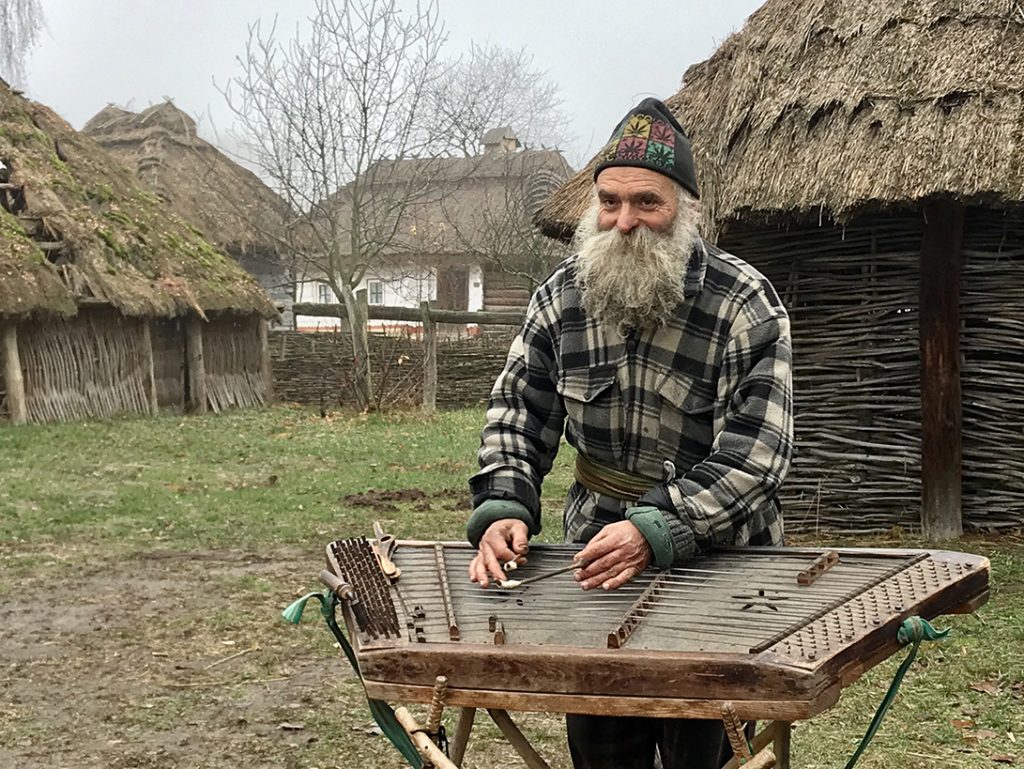
Travel planner
JC Travel: This well-established Kyiv-based tour company, offers escorted small group and custom tours throughout Ukraine, accredited English-speaking guides and transportation support. Enjoy-ukraine.com
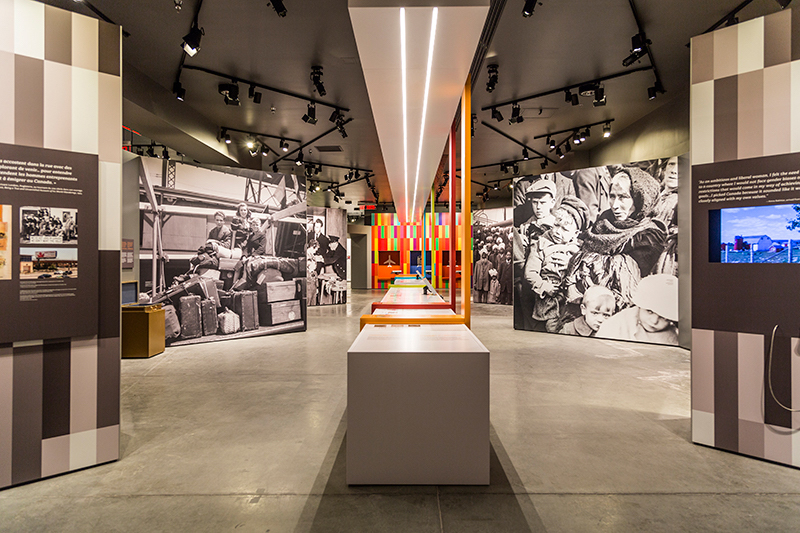
Ukraine International Airlines: Ukraine’s leading carrier offers direct flights from Toronto to Kyiv. flyuia.com
Canadian Museum of Immigration at Pier 21: Located in Halifax, Nova Scotia, museum staff use a variety of internal and external sources to locate immigration records, manifests and passenger lists to assist with genealogical research. pier21.ca
Cobblestone Freeway: This Canadian tour company offers archival genealogical research with costs charged per family line, depending on the complexity of the research, document availability and expenses. cobblestonefreeway.ca
Opera Hotel: A member of the Leading Hotels of the World, the Opera Hotel is situated on Khmelnytskogo Street close to Kyiv’s main attractions such as the Opera House, St. Sophia’s and shopping. opera-hotel.com
Kanapa Salon: Part of the Borysov family of restaurants in Kyiv, this restaurant on Andriyivsky Descent features traditional Ukrainian cuisine made with locally sourced seasonal ingredients paired with regional wines. borysov.com.ua/uk/kanapa
Lviv: Known for its rich cultural history, Lviv makes an excellent base for genealogical research in western Ukraine. The Lviv Tourist Information Center is located at 1 Rynok Square (City Hall). lviv.travel
Leopolis Hotel: Boutique-sized Leopolis Hotel is housed within walking distance of the Lviv’s historic attractions. leopolishotel.com



